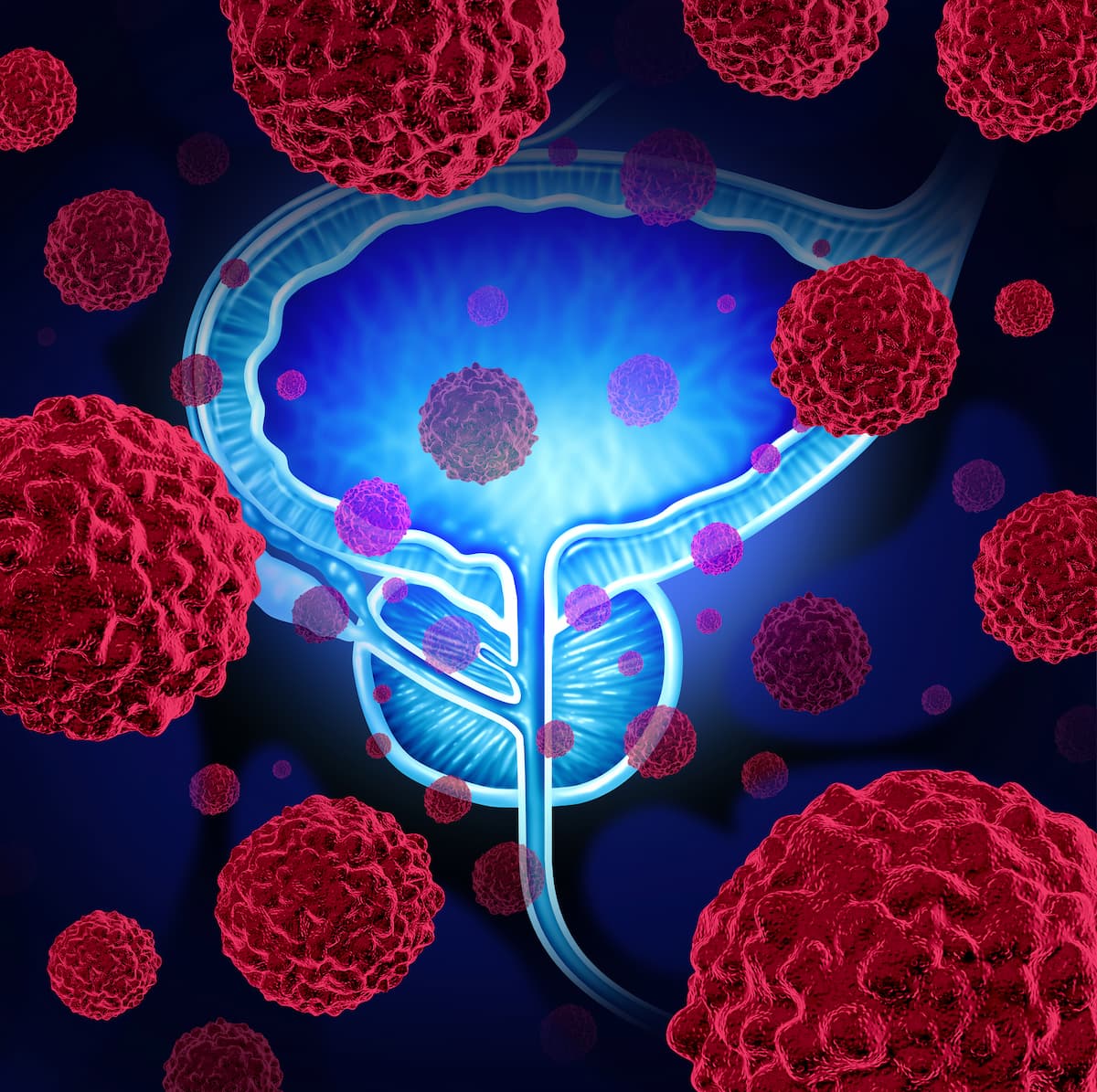Hormone Therapy/Radiation Improves PFS in Oligometastatic Prostate Cancer
In addition to the benefit seen with hormone therapy plus metastasis-directed radiation in oligometastatic prostate cancer, use of intermittent hormone therapy may result in positive disease control and longer eugonadal testosterone intervals.
The use of metastasis-directed radiotherapy plus hormone therapy improved progression-free survival (PFS) compared with hormone therapy alone in patients with oligometastatic prostate cancer, according to findings from the phase 2 EXTEND trial (NCT03599765).1
"This study shows that the combination of metastasis-directed radiation and intermittent hormone therapy significantly improved [PFS], with manageable toxicities, for patients with oligometastatic disease,” according to an expert from The University of Texas MD Anderson Cancer Center.

The median PFS was not estimable [NE] in the combined therapy arm vs 15.8 months (95% CI, 13.6-21.2) in the hormone therapy alone arm (HR, 0.25; 95% CI, 0.12-0.55; P <.001). A post hoc sensitivity analysis including 80 patients with castration-sensitive disease confirmed a significant PFS improvement in the combined therapy arm (HR, 0,22; 95% CI, 0.10-0.51; P <.001).
Notably, metastasis-directed therapy prolonged PFS in patients who did receive a second-generation androgen receptor–targeting (SART) agent (HR, 0.24; 95% CI, 0.08-0.71) and in those who did not receive a second-generation androgen receptor–targeting (SART) agent (HR, 0.36; 95% CI, 0.15-0.83).
The median eugonadal PFS was NE in the combined therapy arm vs 6.1 months (95% CI, 3.7-NE) in the hormone therapy alone arm (HR, 0.32; 95% CI, 0.11-0.91; P = .03).
“This study shows that the combination of metastasis-directed radiation and intermittent hormone therapy significantly improved [PFS], with manageable toxicities, for patients with oligometastatic disease,” lead investigator Chad Tang, MD, associate professor in the Department and Division of Radiation Oncology at the University of Texas MD Anderson Cancer Center, said in a press release on the study.2 “I am encouraged that [these] data, combined with knowledge gained in future trials, will allow us to safely preserve a [patient’s] quality of life following this diagnosis.”
In the randomized phase 2 EXTEND trial, patients with oligometastatic prostate cancer with 5 or fewer metastases were randomly assigned 1:1 to one of 2 treatment arms. In one arm, patients received definitive radiation therapy to all sites of disease plus intermittent hormone therapy with or without a SART agent (n = 43). In the other arm, patients received hormone therapy only (n = 44).
Investigators instituted a planned break in hormone therapy 6 months following enrollment after which hormone therapy ceased until disease progression.
The primary end point of the trial was PFS. Secondary end points included eugonadal PFS defined as the time from eugonadal testosterone level of at least 150 ng/dl until disease progression, overall survival (OS), time to subsequent therapy, time to local treatment failure, safety, and quality of life.
Patients 18 years or older with an ECOG performance status of 0 to 2 and oligometastatic disease from 1 of 12 solid tumors were eligible for enrollment on the trial.
The median patient age was 67 years (interquartile range, 63-72). In the combination therapy and hormone therapy only arms, respectively, most patients had previously received surgery (60% and 48%), had castration-sensitive disease (91% and 93%), and previously received hormone therapy for 4 to 12 months (58% and 50%). Additionally, most patients in each respective arm had a prostate-specific antigen level of 0.2 ng/ml or less at enrollment (53% and 61%), and 0 prior lines of systemic therapy (72% and 70%).
The 2-year incidence of time to new lesion failure was 0.33 (95% CI, 0.18-0.55) in the combined therapy arm vs 0.41 (95% CI, 0.22-0.68) in the hormone therapy alone arm (HR, 0.33; 95% CI, 0.11-1.0; P = .04). Investigators noted that the OS data were immature, and that the time to subsequent line of systemic therapy was comparable between arms. Additionally, 2 instances of local treatment failure occurred with combined therapy.
There were 6 grade 3 adverse effects (AEs), including 3 in the combination arm in 3 patients and 3 in the hormone therapy alone arm in 2 patients. Additionally, investigators reported 16 grade 2 AEs, including 12 in the combination arm in 7 patients, and 4 in the hormone therapy alone arm in 1 patient. Investigators did not observe any grade 4/5 AEs.
In terms of quality of life, there were no differences in baseline demographic or disease characteristics between patients who answered the surveys and those who did not. Investigators also did not identify significant relationships between treatment arm and test scores.
References
- Tang C, Sherry AD, Haymaker C, et al. Addition of metastasis-directed therapy to intermittent hormone therapy for oligometastatic prostate cancer: the EXTEND phase 2 randomized clinical trial. JAMA Oncol. Published online April 6, 2023. doi:10.1001/jamaoncol.2023.0161
- Metastasis-directed radiation therapy plus hormone therapy improves progression-free survival for men with advanced prostate cancer. News release. The University of Texas MD Anderson Cancer Center. April 6, 2023. Accessed April 7, 2023. bit.ly/3UfEkAN
Prolaris in Practice: Guiding ADT Benefits, Clinical Application, and Expert Insights From ACRO 2025
April 15th 2025Steven E. Finkelstein, MD, DABR, FACRO discuses how Prolaris distinguishes itself from other genomic biomarker platforms by providing uniquely actionable clinical information that quantifies the absolute benefit of androgen deprivation therapy when added to radiation therapy, offering clinicians a more precise tool for personalizing prostate cancer treatment strategies.